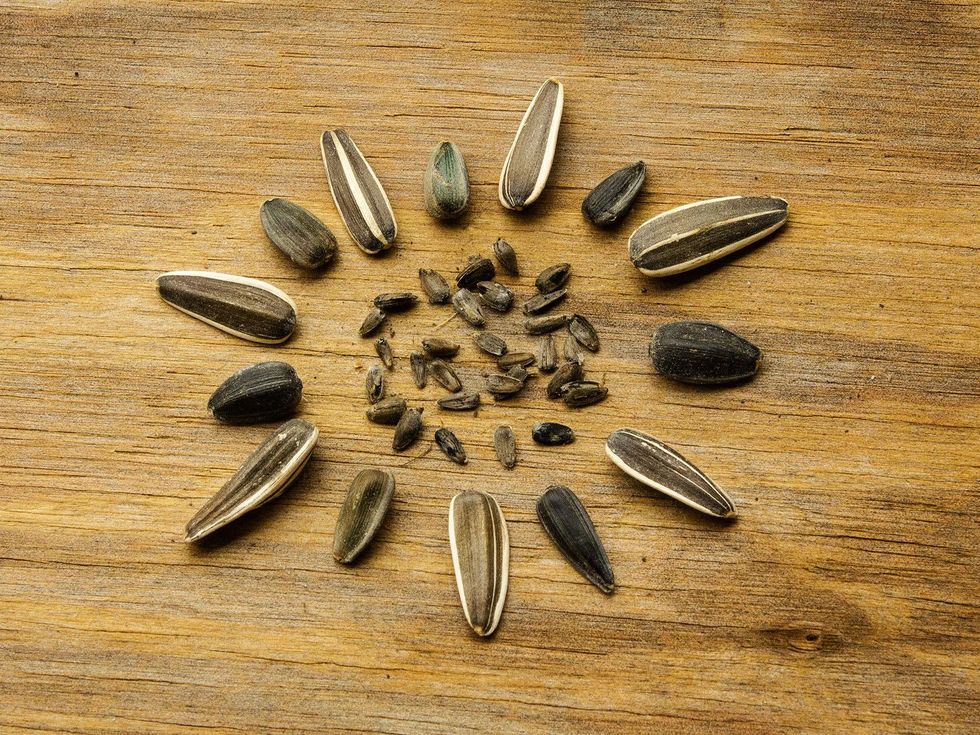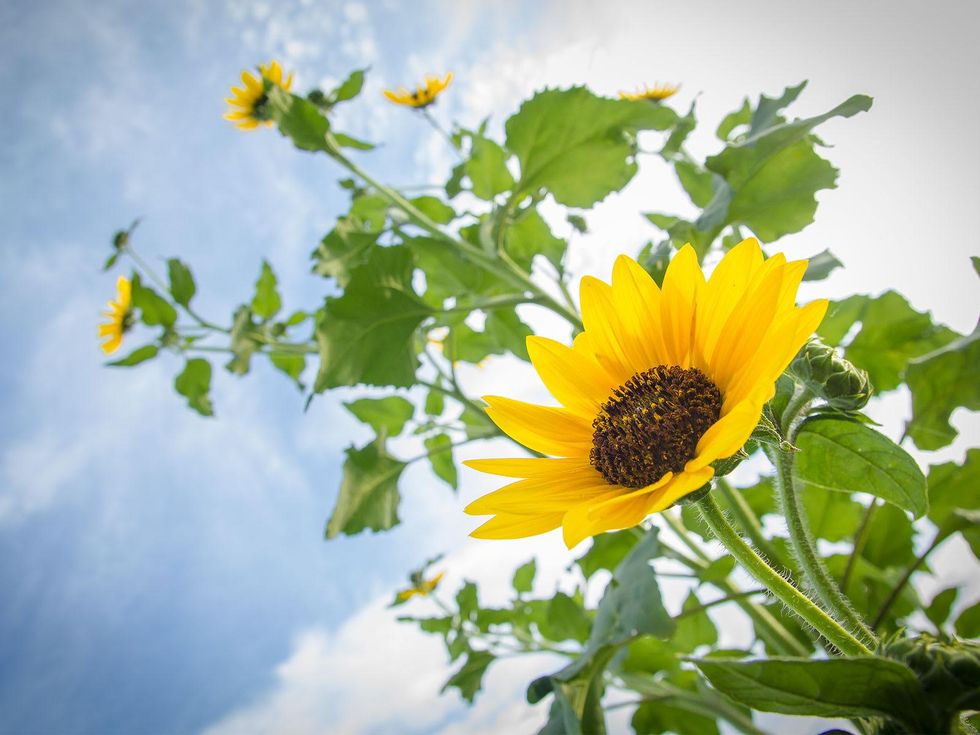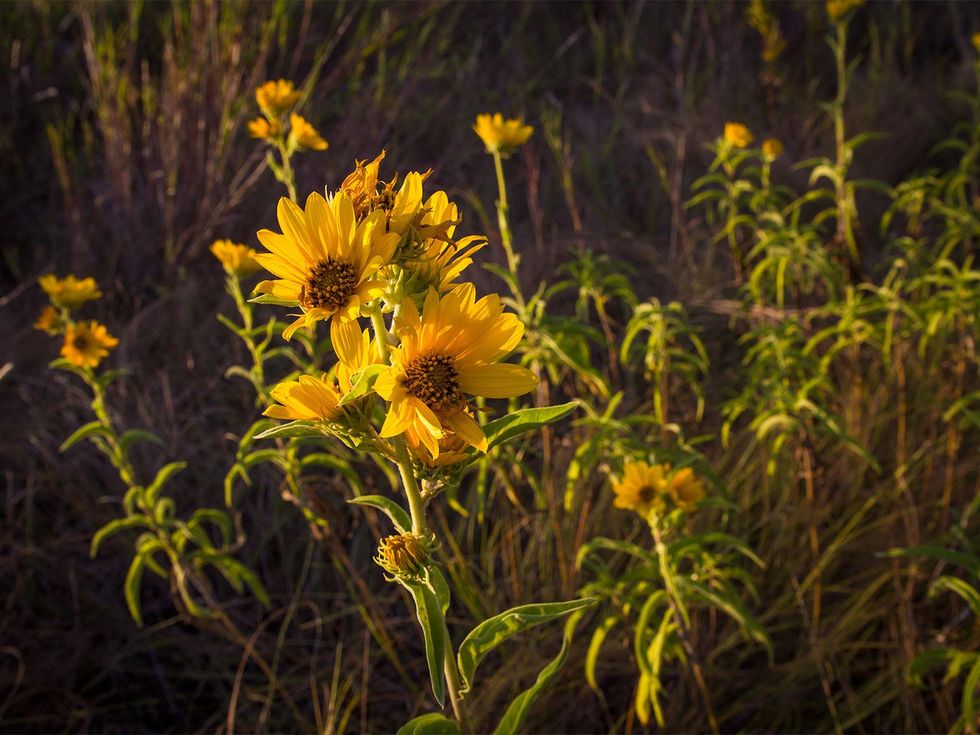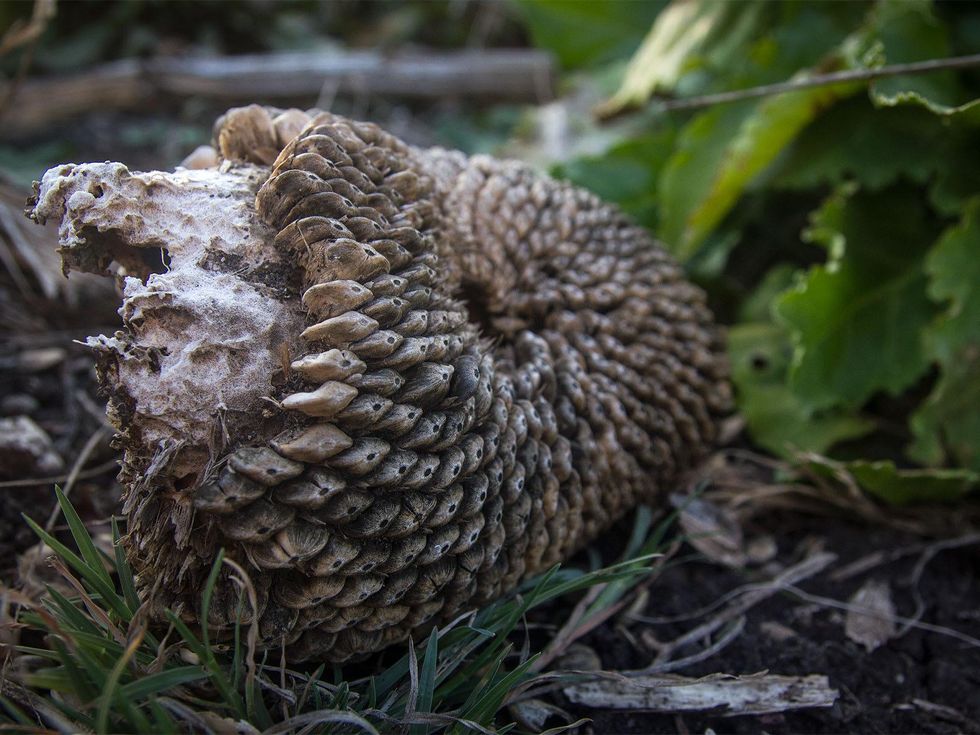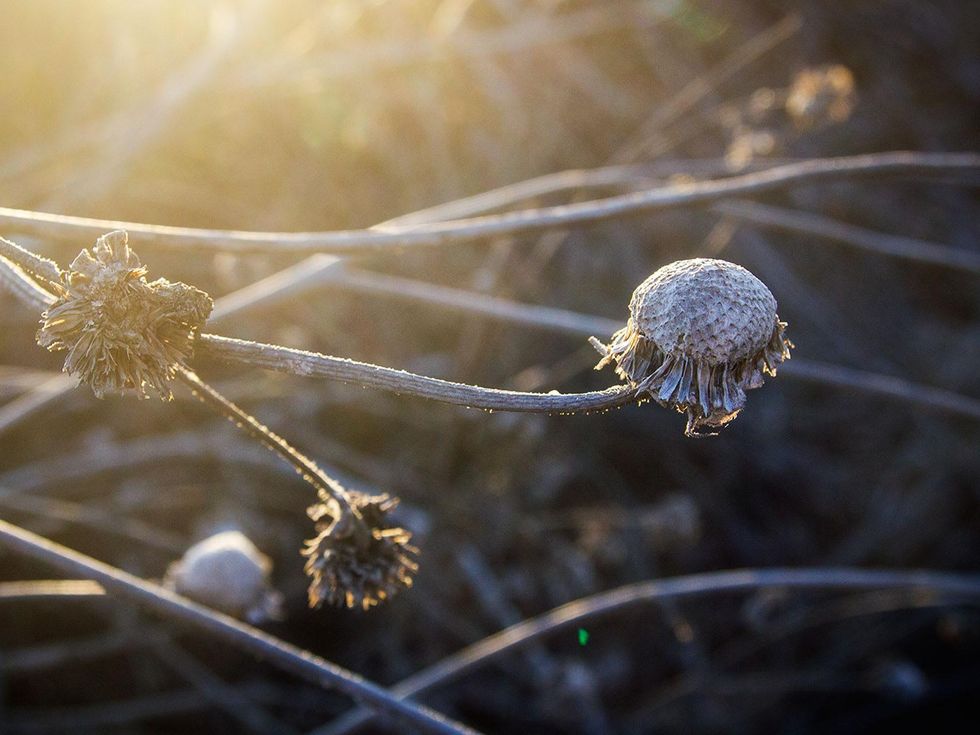The Farmer Diaries
Common flower turns in surprise MVP performance on Texas farm
Everyone knows a sunflower when they see one. They're even more recognizable than bluebonnets. Blooming throughout summer and into the fall, sunflowers are a beautiful sight, especially when they cover a field.
I've always taken common sunflowers for granted. The grow freely on the 40 acres of my family's farm along with the fellow native maximilian sunflowers. I've never once had to cast seed in the field for them. They just stay a perpetual part of the landscape, needing no water, no fertilizer and no care whatsoever. They're so numerous and grow so well that they could almost be called a weed.
But I'll never treat them like a weed because of the countless benefits they bring to the farm. Wild sunflowers from Native American Seeds and sunflower cultivars from Bakers Creek Heirloom Seeds, Botanical Interests and Native Seeds/Search boost crop production and enhance life on the farm in several ways.
Feed the bees
Each growing season, my wife and I plant more sunflowers in our raised bed garden than the year before, and we've noticed that they aid just about everything else we plant. The mammoth sunflowers, teddy bear sunflowers and de facto common sunflowers dominate the landscape, and they attract bees in a way few other flowers can.
Every day during the growing season, honeybees, small solitary bees and clumsy bumblebees work the sunflowers for nectar and pollen. The trail I take to my raised bed garden must be in the flight path between the garden and the bumblebees' homes, because they pass me by like hasty commuters on their way to work.
Having bees in a garden means that pollination of cucumbers, squash, melons and other veggies is a sure thing. Like any living creature, bees are curious; after gorging themselves on sunflower nectar, they simply have to try out the other flowering plants in the garden. Most of those flowers are crops that need bees to pollinate them to produce fruit.
Attract beneficial insects
Sunflowers host aphids. Of course, we usually don't want aphids in the garden because the tiny green insects suck the life out of the plants we grow.
But seemingly counter to all logic, by attracting aphids, sunflowers seem to keep the aphid population in the garden under control. Perhaps they act like bait, luring the aphids away from crops. I suspect, though, that the controlling effect comes from the fact that by feeding aphids yet not succumbing to them, sunflowers keep just enough aphids alive in the garden to attract ladybugs and other aphid eaters.
With plenty of food always on hand, the aphid-eaters never need to leave to find food elsewhere, so they stay, look around every once in a while and clean out the aphids from other plants too.
What's more, the honeydew exuded by the aphids accumulates on the lower sunflower leaves and attracts a wide variety of wasps. The wasps seem to feed directly off the dew, but once they begin to build a nest for raising their young, they need caterpillars.
So having a population of happy wasps in the garden has decimated the caterpillar population. I've not once been stung by the wasps. They seem to ignore me if I ignore them. Honeydew is also food for black ants, which are also pollinators.
Feed the birds
Birds are welcome in my garden. I enjoy the sight of cardinals and the song of doves. When an occasional bobwhite quail makes himself known, it's an occasion to sit still, be quiet and listen to this call that's become so rare in the last three decades. These seed eaters need seeds, and I prefer to grow as much of what they need myself rather than rely on packaged bird seed.
I've grown especially concerned about what's in the bird seed I buy, since Scott's Miracle-Gro was found to be intentionally adding bird-killing poisons to its line of wild bird seed and falsifying documents to cover up the fact. The company was eventually found out after selling 70 million bags of seed, and it paid $12.5 million in criminal fines when the Justice Department looked into the matter.
When you want anything done right, you have to do it yourself.
Growing sunflowers for birds is one of the best ways to aid them. Sunflower seed is packed with nutrition, and its oil content provides the fat they need to get through a cold winter. Cardinals can crack open the huge sunflower seeds of a mammoth sunflower. These seeds are similar to the ones we humans eat. Smaller birds like mourning doves rely on the tiny seeds of the common sunflower, which are about the size of two grains of rice, side by side.
When the heads of sunflowers lose their outer petals and dry up, they create seed storage units that last through the winter. A little of that seeds falls out as time passes until all of it is gone by spring. It's a little like an automated bird feeder dispensing seeds gradually through the winter, feeding the birds daily instead of all at once. I still buy bird seed, but eventually I hope to have enough sunflowers in the field to sustain birds without supplementation.
Hummingbirds also feed from sunflowers all summer long. I think they prefer sunflower nectar to the sugar water in a hummingbird feeder. Moreover, I'm certain that the nutritional content of nectar has to be better for the little birds than sugar. Sunflowers also need no daily cleaning, unlike hummingbird feeders that can develop mold that may blind hummingbirds if it gets onto their beaks and grows up and into their eyes.
Create beauty
Whenever I drive past a field of sunflowers, I enjoy their beauty. So I've decided to give more attention to cultivating common and maximilian sunflowers in an area that I've allotted for only wildflowers, no crops. A gigantic mammoth sunflower or bundle of teddy bear sunflowers adds spots of vivid color to the garden, which my wife has helped me to appreciate through her gift for growing them and photographing their detail.
Sunflower growing guide
Sierra DaSilva, a horticulturist with the Lady Bird Johnson Wildflower Center, says sunflowers are easy to grow in Texas. She has an affinity for two of the more common varieties found in the state.
"My favorite native sunflowers are the common sunflower and maximilian sunflower," she says. "Both thrive in the full sun and require very little water once established. You can put out seed preferably in the fall but also in the spring, and you can plant transplants right now and until it gets really hot."
The common sunflower blooms July through October; the maximilian blooms August through November, DaSilva says. She recommends planting the maximilian against a wall or fence, or as a hedge.
"It gets very tall — as much as 3 to 10 feet tall, usually at least as high as a person," she says. "When it blooms, it is absolutely covered in flowers. When it has bloomed and turned brown in the winter, you lop it to the ground, and it comes back thicker each year. It's a wonderful plant."
It's also resilient and unfussy about the soil where it's planted.
"Maximilian sunflower and common sunflower exist in prairies, and both can handle dry rocky soil, but both seem to do okay with some clay too," she says. "Neither will need much water, once established. The swamp, narrow leaf sunflower can handle moister soil, so it's a good choice for wetter, muddier areas, but it also can be very drought tolerant once established."
There's little that needs to be done to the soil before sowing sunflower seeds. The wild varieties don't even need to be sown in tilled soil as long as the seed makes contact with bare soil, preferably covered by just a little soil but not sown any deeper than twice their depth.
Showy ornamental sunflowers will benefit by being sown in tilled soil that has been amended with nutrients, such as the list of Dirty Seven that have proved their usefulness to me in my garden. The showier varieties also need a weekly watering, unlike wild sunflowers that can handle the drought on their own.
